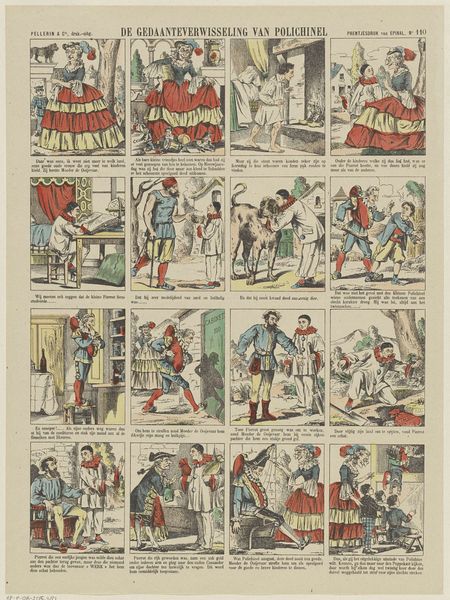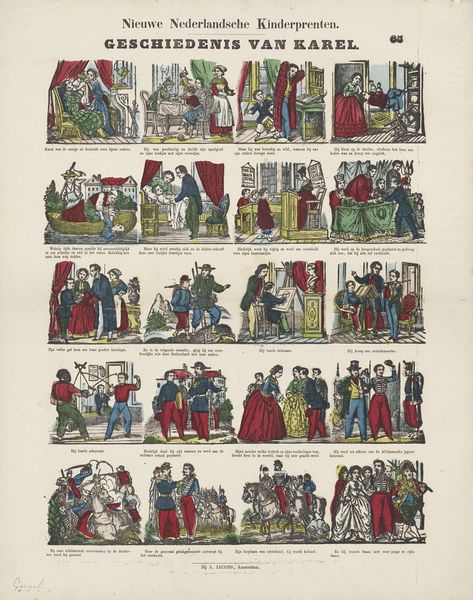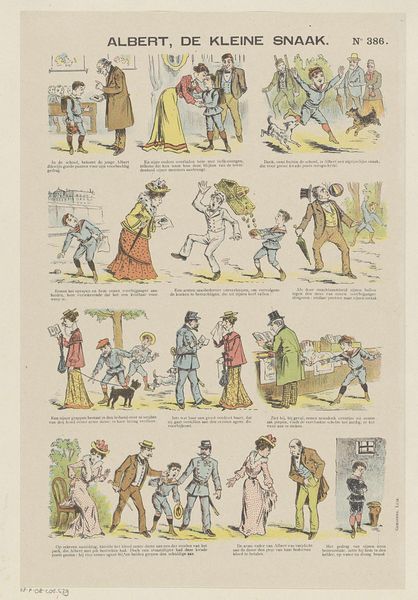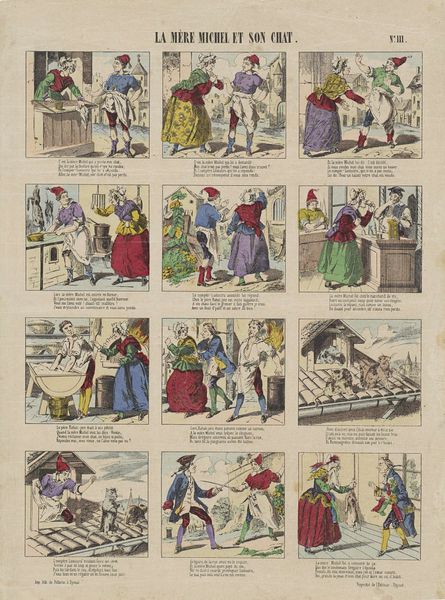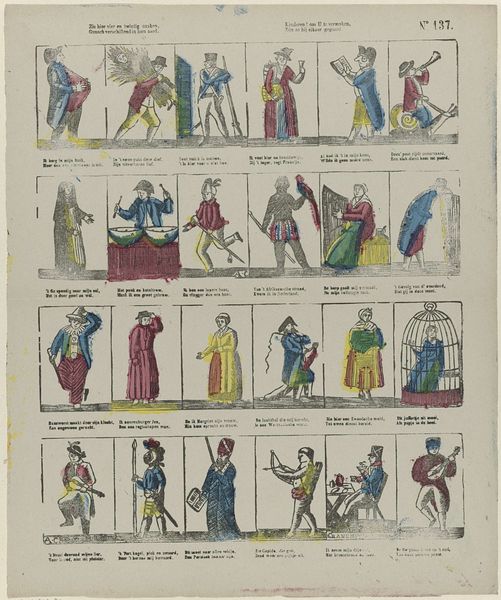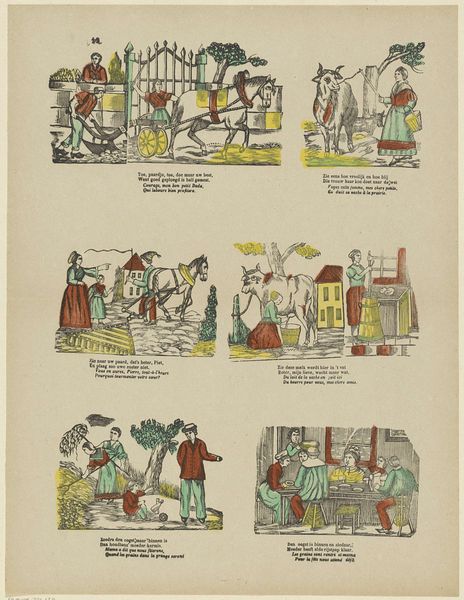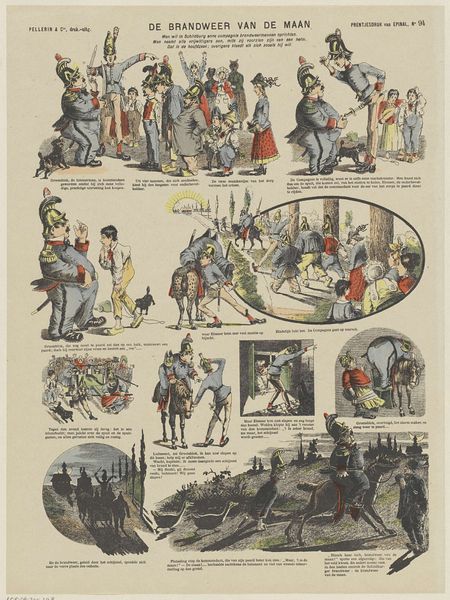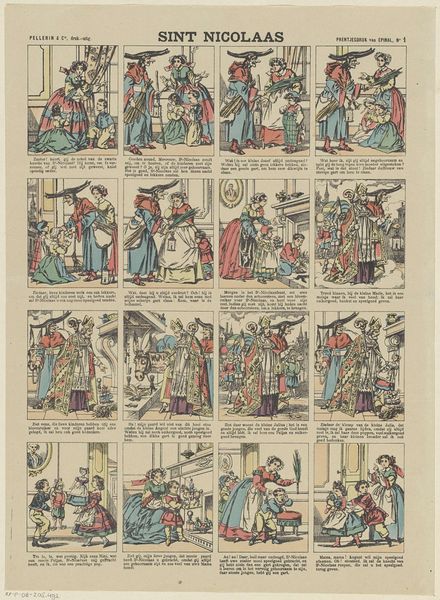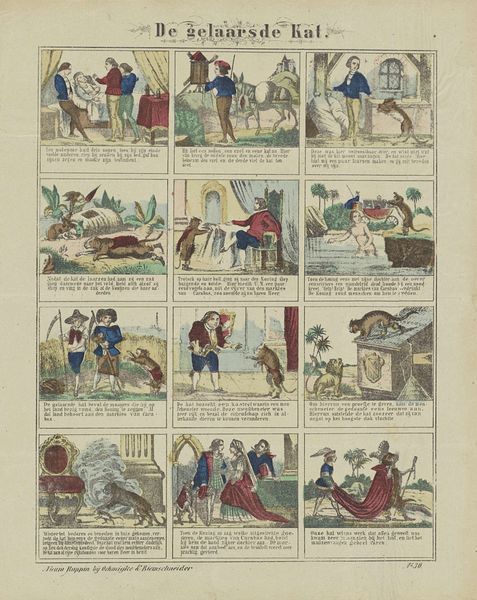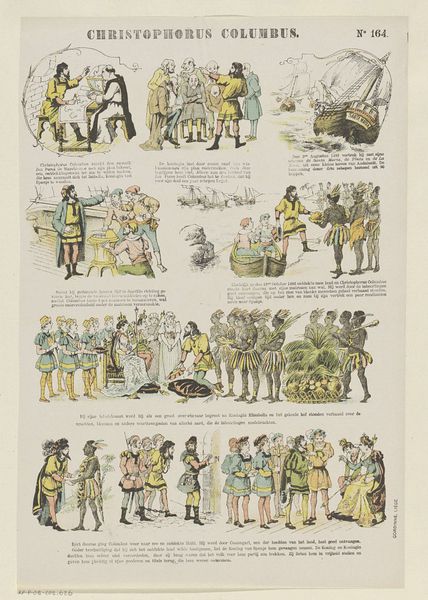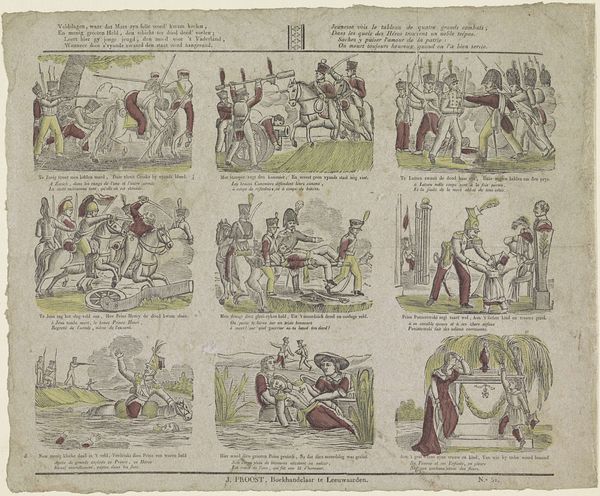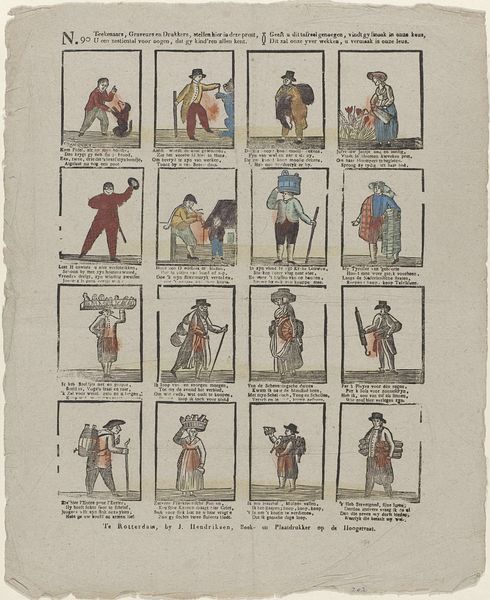
#
narrative-art
# print
#
comic
Dimensions: height 400 mm, width 271 mm
Copyright: Rijks Museum: Open Domain
Curator: Look at this comic-style print, "De schoone slaapster in het bosch", housed here at the Rijksmuseum. It's dated rather broadly, between 1894 and 1959. Editor: It’s…charming, in a faded way. Sort of like those vintage children’s books, but laid out like a storyboard for a forgotten fairy tale. The palette is muted, all soft pastels. Curator: Exactly! This print narrates the story of Sleeping Beauty through a series of small vignettes, almost like a visual summary. Given its production dates, it provides insights into both popular storytelling and the evolution of printmaking during that time. We could discuss whether these comic adaptations served to reinforce patriarchal ideas of feminine passivity. Editor: Oh, definitely. Consider how Sleeping Beauty’s agency is completely removed; she's the passive object of a prophecy, of male heroism. What interests me more are those compressed images—it's as if the story wants to be understood quickly, readily digestible for a new era, but each frame, despite the quaint aesthetic, tells its own miniature tale of waiting, hoping. Curator: Yes, the use of sequential panels makes the narrative accessible, reflecting a societal shift towards mass media and readily consumable stories. Each tiny panel carries weight in showing its specific moment within social standards, gender roles and, of course, expectation from youth onwards. Editor: But what a beautifully packaged expectation, though. The colors are so light and comforting... Is that how oppressive structures survive? By swaddling us in gentle, pleasing visuals? It's deceptively innocent. It looks sweet, it evokes simpler times... Curator: That's it right there, the perfect tension! The form, ostensibly playful and innocuous, conceals a potentially loaded message about social roles. The charm almost acts as a lure! Editor: Exactly. Seeing this piece prompts a deeper exploration. It may seem frivolous but then we might ask: How does storytelling condition our acceptance of, even our longing for, seemingly passive roles? What price aesthetics against power and social roles?
Comments
No comments
Be the first to comment and join the conversation on the ultimate creative platform.
